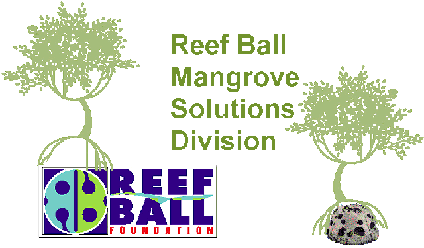

Reef Ball Living Shorelines are defined as shorelines that protect natural/native land water interfaces, where reef balls are used nearshore to ensure the stability of that interface.
Living shorelines are amongst the most productive habitats in our oceans and estuaries. They are literally where the sea meets the land.
Unfortunately, global warming and sea level rise is accelerating erosion and creating change on these coastlines that negatively affect the habitat. Furthermore, humans hace adapted these coastlines for our own use. affecting marine life, seabirds and other creaturs that use these interfaces. Reef Ball living shorelines are a way to enhance our shorelines. This is accomplished by using reef balls just off the shore to reduce wave and current energy while creating reef habit for oysters. Marine life, such as fishes crabs and seagrass. At the shoreline, we have many important habitats created by plants and shoreline elements like sand, clay banks, and biological marine debris. Some of the most important littoral plants are mangroves, marsh and cord grasses, and other salt tolerate native vegetation.

The Reef Ball Foundation has a very small division that specializes in Red Mangrove plantings. Sometimes these trees need a little extra help in getting started in high wave energy areas and we have some simple solutions that help.
Likewise, other elements of the shoreline like marsh and cord grasses, and other native plants and habitats are protected by the offshore Reef Balls.







After the shoreline itself, the area in between the shore and the protective Reef Balls has important sand, hard bottom and muddy habitats too. Seagrasses help stablize the non-hard areas.
Seagrasses don't grow directly on Reef Balls but instead in the area between the reef balls and the seashore. Seagrasses thrive better in environments where they are not destroyed by high energy kick back from man-made obstructions such as seawalls.





Oysters and many other filter feeders such as sponges, barnacles, tunicates, filter eating crabs and algae grow on the reef balls and they are critical to manage sedimentation and turbidity of our waters. An oyster all by itself can filter feed as much as 50 gallons a day. Working together the marine life the attaches and grows on Reef Balls can filter thousands of gallons per day per Reef Ball.
From an even more scientific perspective, denitrification occurs as the waste from these filter feeds combines with the high micro surface area of the Reef Balls and oyster shells in areas where water flows slowly through those surfaces. This helps remove human pollution from fertilizers and other sources of nitrogen.
Reef ball living shorelines also create unique opportunities for humans,snorkeling, nearshore fishing, and even just viewing nature from the land or dock to relax our busy minds.


